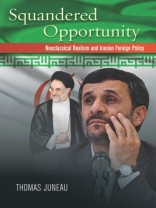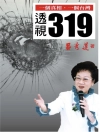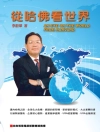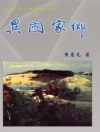The Islamic Republic of Iran faced a favorable strategic environment following the US invasions of Afghanistan in 2001 and Iraq in 2003. Its leadership attempted to exploit this window of opportunity by assertively seeking to expand Iran’s interests throughout the Middle East. It fell far short, however, of fulfilling its long-standing ambition of becoming the dominant power in the Persian Gulf and a leading regional power in the broader Middle East.
In Squandered Opportunity, Thomas Juneau develops a variant of neoclassical realism, a theory of foreign policy mistakes, to explore the causes and consequences of Iran’s sub-optimal performance. He argues that while rising power drove Iranian assertiveness—as most variants of realism would predict—the peculiar nature of Iran’s power and the intervention of specific domestic factors caused Iran’s foreign policy to deviate, sometimes significantly, from what would be considered the potential optimal outcomes.
Juneau explains that this sub-optimal foreign policy led to important and negative consequences for the country. Despite some gains, Iran failed to maximize its power, its security and its influence in three crucial areas: the Arab-Israeli conflict; Iraq; and the nuclear program. Juneau also predicts that, as the window of opportunity steadily closes for Iran, its power, security, and influence will likely continue to decline in coming years.
表中的内容
Contents and Abstracts
Introduction
chapter abstract
The introduction sets the stage by explaining how the book offers an original reading of Iran’s foreign policy: why and how Tehran failed to seize the opportunities it faced after 2001. It starts by briefly demonstrating that various international relations theories fail to explain the underwhelming nature of Iran’s foreign policy. It then outlines a unique variant of neoclassical realism, both in general terms and in terms of its specific application to the Iranian case. It then introduces the book’s research objectives and working hypotheses, followed by a brief methodological discussion.
1
Neoclassical Realism
chapter abstract
This chapter reviews the literature on neoclassical realism, and explains its evolution as well as its strengths and weaknesses. Neoclassical realists agree with other realists that power is the chief determinant of foreign policy. Yet a reliance solely on structural factors – a state’s position in the international distribution of power – cannot account for underwhelming performances, structure explains the context in which a state operates but says little about the content of foreign policy. Neoclassical realists thus posit that domestic factors act as intervening variables or ‘transmission belts’ converting systemic pressures into choices. In addition, neoclassical realism is a theory of mistakes differentiating ideal or optimal foreign policy (responding solely to structural pressures) from actual, sub-optimal choices, which arise as a result of the filtering effect of domestic pathologies.
2
From Power to Foreign Policy: The Causal Chain
chapter abstract
This chapter proposes modifications to neoclassical realism, labeling the result the strategic analysis variant. It is possible to view this variant in terms of its position on a continuum built around a tenet of realism, that capabilities shape intentions. At one end, structural realism predicts that states faced with a power vacuum seek to expand their interests abroad. At the other end, the strategic analysis variant increases accuracy while remaining within the confines of realism: it fragments power to understand how shifts in its components affect foreign policy, it increases the number and specificity of intervening variables to reflect their filtering role, it conceptualizes foreign policy more precisely by separating it into four components (power/security/influence-maximization, national interests, strategies, and consequences), and it systematizes the concepts of actual and ideal foreign policy and clarifies how states suffer consequences as a result of gaps between ideal and actual versions.
3
Power
chapter abstract
This chapter introduces the structural context driving Iranian foreign policy. Iran, to begin, benefits from a strong pool of potential power assets, by dint of its geography, natural resources, and population. In addition, Iran faced a window of opportunity after 2001, a power advantage which primarily arose with the collapse of rival regimes in Afghanistan and Iraq. Other factors including the rise in oil prices and the success of allies such as Hamas and Hezbollah also helped create favourable conditions. Yet this advantage was brittle and unsustainable. A large proportion of the growth in Iran’s power was accounted for by unconventional elements: asymmetric military capabilities, the attractiveness of its rejectionist model and alliances with non-state actors, while hard aspects – wealth and conventional military assets – grew in absolute terms but stagnated in relative terms.
4
Domestic Pathologies
chapter abstract
Systemic pressures are filtered through domestic processes, explaining the conversion from possible – the range of feasible outcomes shaped by power – to actual choices. Three intervening variables matter: status, identity and factional politics. There is a discrepancy, first, between Iran’s aspiration to regional power status and its perception that the status ascribed to it is unbecoming of what it believes is its rightful place in the regional order, it suffers from a status discrepancy. This is a source of revisionism, but remains indeterminate. To achieve greater specificity, the second variable consists of the Iranian regime’s rejectionist identity, which specifies Iran’s interests by ranking alternatives and shaping decisions. The balance of power among regime factions – the third intervening variable – constantly evolves but remains within the parameters of the Islamic Republic’s identity. That is, power, aspirations and identity shape an increasingly precise set of options, bargaining among factions subsequently determines which are selected.
5
Iran’s Policy in Iraq
chapter abstract
Iran has major interests in Iraq: geography ensures that the security of each is partly dependent on the power and ambitions of the other. In Iraq, Iran’s power was less constrained than in the Arab-Israeli conflict, with conventional elements of power playing a salient role. Iran had genuine security concerns emanating from the presence of US troops and instability in Iraq. There was thus less scope for agency as structural pressures pushed and shoved Iran more compellingly. Tehran partly accomplished its objectives: it positioned itself as an indispensable player in Iraq and was instrumental in the establishment of a stable but weak Iraqi government devoid of anti-Iranian biases. Nonetheless, Iran’s performance has been sub-optimal, though less than in other issue-areas. This smaller discrepancy was due to the limited role of domestic pathologies in shaping policies: there was therefore less deviation from optimal, structurally-induced outcomes.
6
Iran and the Arab-Israeli Conflict
chapter abstract
Iran’s rising power pushes it towards greater assertiveness in the Arab-Israeli conflict. Yet solely on the basis of structural pressures, there is limited security for Iran to maximize: it does not share a border with Israel and economic ties are limited. Structure thus provided strong but ambiguous signals, leaving scope for domestic pathologies to distort policy. The combination of rising power and status discrepancy tells us that Iran will be an assertive and revisionist power, while regime identity specifies the rejectionist nature of this revisionism. As the factional balance increasingly favoured hard-liners, policy further tilted towards rejectionism. Yet Iran only has a narrow set of tools, especially the appeal of its rejectionism and its ties to like-minded actors. This limits the breadth of the impact it can have on the conflict, and is insufficient to shape the regional order in the revisionist direction it envisions.
7
Iran’s Nuclear Program
chapter abstract
Driven by its rising power, an assertive Iran progressed along the nuclear path. Structural pressures were strong but indeterminate, however, failing to push Iran as compellingly as in Iraq. This allowed domestic pathologies to influence policy. Iran suffers from a status discrepancy: it wants to reap the benefits associated with joining the nuclear club but is denied the opportunity. It is thus dissatisfied with the nuclear order. The regime’s identity and the evolution of the factional balance in favour of conservatives and hard-liners specify how revisionist options were narrowed towards rejectionism. Tehran has been able to gain influence thanks to its nuclear program, more than in the Arab-Israeli conflict but less than in Iraq. Most importantly, the program promises future benefits. Paradoxically, Iran also suffers significant consequences because of its choices: its economy is increasingly suffocated by sanctions, while the country suffers from growing isolation.
Conclusion
chapter abstract
The Conclusion synthesizes the results by discussing how Iran’s power, security and influence, despite some successes, remain well below their potential. The situation, moreover, is likely to get worse: Iran’s power will face growing constraints in coming years. Next, the conclusion argues that the analysis validates the view of structural realism as a normative theory – accounting for how states should behave – and of neoclassical realism as a theory of mistakes, accounting for the gap between ideal and actual policies through its integration of domestic processes. This arises in part because of the distinction between rationality and optimality: neoclassical realism provides a framework explaining why choices are rational but not necessarily optimal. After reflecting on the relevance of other pillars of the framework – complexity, eclecticism, dynamism, path-dependency and foreign policy strategies – the conclusion offers prescriptions for Iran to maximize its power, security and influence.
关于作者
Thomas Juneau is an Assistant Professor in the Graduate School of Public and International Affairs at the University of Ottawa.












